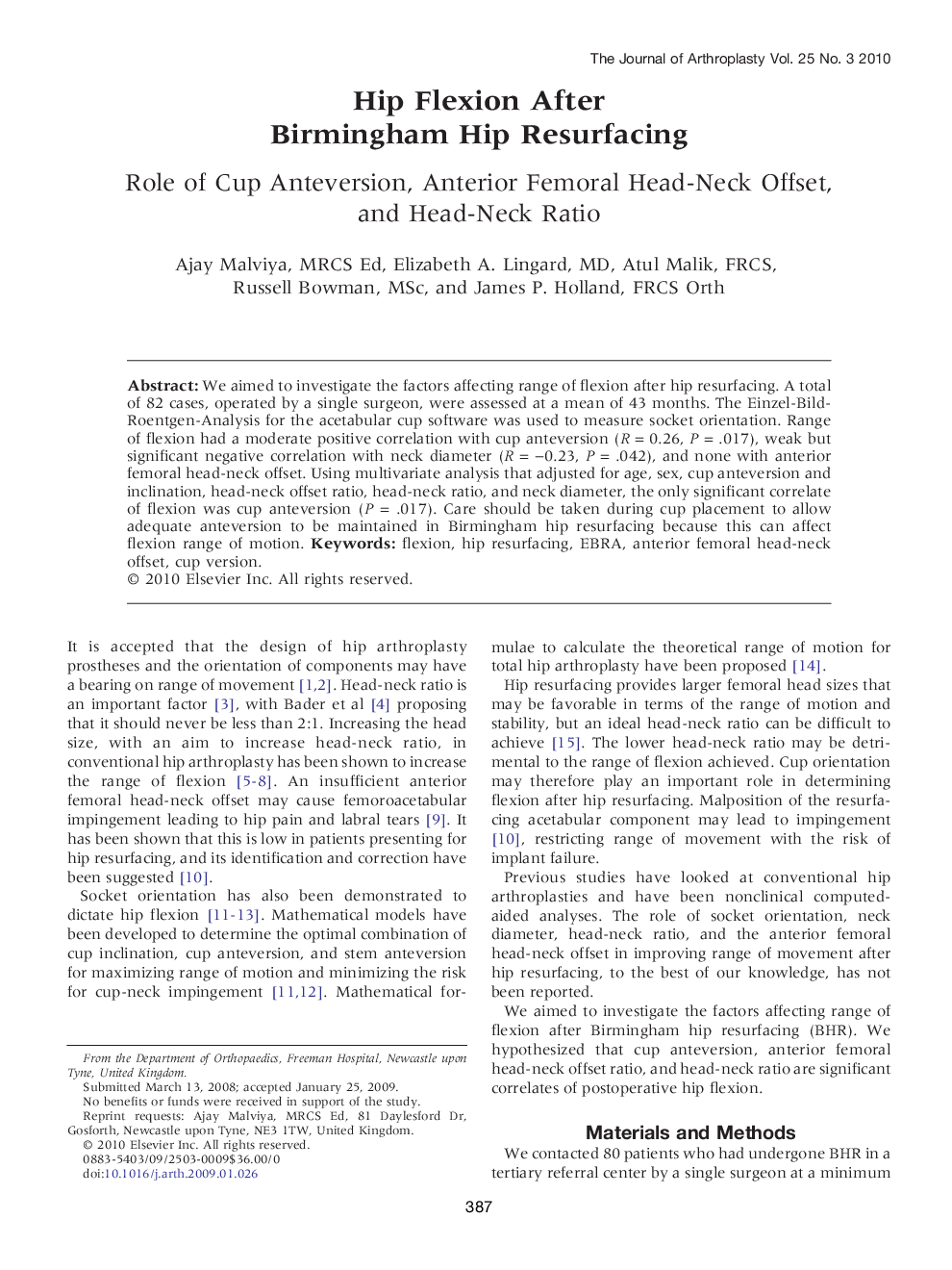| کد مقاله | کد نشریه | سال انتشار | مقاله انگلیسی | نسخه تمام متن |
|---|---|---|---|---|
| 4062480 | 1604047 | 2010 | 5 صفحه PDF | دانلود رایگان |

We aimed to investigate the factors affecting range of flexion after hip resurfacing. A total of 82 cases, operated by a single surgeon, were assessed at a mean of 43 months. The Einzel-Bild-Roentgen-Analysis for the acetabular cup software was used to measure socket orientation. Range of flexion had a moderate positive correlation with cup anteversion (R = 0.26, P = .017), weak but significant negative correlation with neck diameter (R = −0.23, P = .042), and none with anterior femoral head-neck offset. Using multivariate analysis that adjusted for age, sex, cup anteversion and inclination, head-neck offset ratio, head-neck ratio, and neck diameter, the only significant correlate of flexion was cup anteversion (P = .017). Care should be taken during cup placement to allow adequate anteversion to be maintained in Birmingham hip resurfacing because this can affect flexion range of motion.
Journal: The Journal of Arthroplasty - Volume 25, Issue 3, April 2010, Pages 387–391